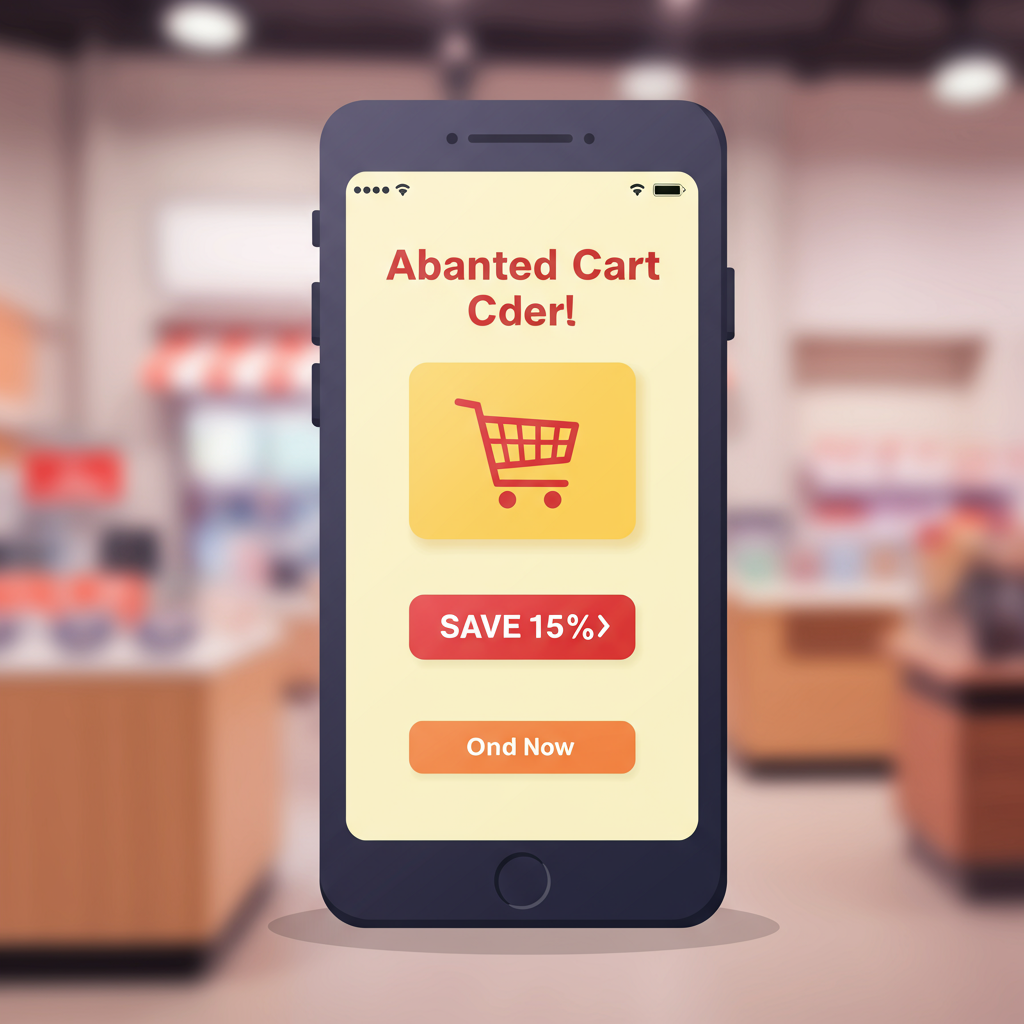How I’m Turning Abandoned Carts into Completed Orders with Direct Text Messages
Hello fellow Shopify merchants! Today, I want to talk about a topic that keeps many of us up at night: abandoned carts. It’s a universal challenge in e-commerce, isn’t it?
Imagine a customer fills their cart with exciting products, gets to the checkout, and then… nothing. They disappear. This scenario is incredibly common, representing billions in lost revenue annually.
For years, email has been our go-to for recovering these lost sales. And while email is still vital, I’ve discovered an even more immediate and effective channel: SMS.
Yes, I’m talking about abandoned cart SMS campaigns. In my experience, this strategy has been a game-changer for recovering revenue that I once thought was gone forever.
Why SMS, you might ask? Well, think about it. How often do you check your emails versus how quickly you open a text message? The difference is stark.
SMS messages boast incredibly high open rates, often exceeding 90%, and they’re usually read within minutes of being received. This immediacy is precisely what we need when a customer is on the fence.
It’s a direct line to your customer, cutting through the noise of crowded inboxes. This personal touch can often be the nudge they need to complete their purchase.
So, how do we set this up on Shopify? The first step is choosing the right SMS marketing app from the Shopify App Store. There are many options, some specializing in abandoned carts, others offering broader marketing features.
When selecting an app, I look for features like automation, personalization capabilities, analytics, and, crucially, compliance tools to ensure I’m adhering to regulations.
Once you have an app, the next critical step is collecting phone numbers. This must always be done with explicit consent. I ensure my opt-in checkboxes are clear and prominent during checkout or signup.
Remember, compliance is non-negotiable. Regulations like TCPA in the US, GDPR in Europe, and similar laws globally require strict adherence to opt-in rules and clear opt-out instructions. I always make sure my campaigns are fully compliant.
Now, let’s talk about crafting the messages themselves. This is where the magic happens. Your SMS messages need to be concise, compelling, and actionable.
Personalization is key. I always try to include the customer’s name and, if possible, mention specific items left in their cart. “Hey [Name], you left [Item] in your cart!” is far more effective than a generic message.
A clear Call to Action (CTA) is paramount. This means a direct link back to their abandoned cart. Make it easy for them to pick up exactly where they left off.
Sometimes, a gentle reminder isn’t enough. This is where incentives can come into play. A small discount, free shipping, or a limited-time offer can be incredibly persuasive.
However, I use incentives sparingly. Over-reliance can train customers to abandon carts just to get a discount. I often reserve them for the second or third message in a sequence.
Your brand’s tone should shine through, even in a short SMS. Whether it’s friendly, professional, or playful, keep it consistent. Emojis can add personality, but use them wisely to avoid looking unprofessional.
Let’s discuss the SMS flow or sequence. I’ve found a multi-message approach to be most effective, rather than just a single text.
**Message 1 (15-30 minutes after abandonment):** This is a gentle, immediate reminder. Something like, “Hi [Name], you left items in your cart! Complete your order here: [Link]”
**Message 2 (12-24 hours later):** If they haven’t converted, this message can offer assistance or a soft incentive. “Still thinking about it? Your cart is waiting! Need help or have questions? [Link to cart/support]”
**Message 3 (24-48 hours later):** This is often the “last chance” message, perhaps with a stronger incentive or a sense of urgency. “Don’t miss out! Your cart expires soon. Use code SAVE10 for 10% off: [Link]”
I also consider segmenting my audience. High-value carts might receive a different, more personalized sequence than lower-value ones. This allows for more tailored incentives.
Beyond the messages, there are several best practices I always follow. A/B testing your messages is crucial. Experiment with different CTAs, incentives, and timings to see what resonates best with your audience.
Timing is everything. While the first message should be quick, subsequent messages need to be spaced out appropriately to avoid overwhelming the customer.
Never, ever spam your customers. Respect their inbox. A well-thought-out sequence of 2-3 messages is usually sufficient. More than that can lead to opt-outs and negative brand perception.
Always make the opt-out process clear and easy. This is not just a legal requirement but also a sign of respect for your customers.
Tracking and analytics are vital. My chosen SMS app provides data on open rates, click-through rates, and, most importantly, recovered revenue. This data helps me refine my campaigns.
I also find that combining SMS with email campaigns can be incredibly powerful. They complement each other, reaching customers through different preferred channels.
Re-emphasizing legal compliance: I cannot stress enough the importance of staying updated on SMS marketing regulations in all regions you operate in. Fines for non-compliance can be substantial.
Measuring success goes beyond just recovered revenue. I also look at my opt-out rates, customer feedback, and overall customer lifetime value to ensure my SMS efforts are sustainable and positive.
In conclusion, implementing abandoned cart SMS campaigns has been one of the most impactful strategies for my Shopify store. It’s direct, effective, and provides an immediate boost to my bottom line.
It allows me to re-engage customers at a critical moment, turning potential losses into valuable sales. If you haven’t explored this channel yet, I highly recommend it.
What do you think about this article? Have you tried SMS for abandoned carts, or are you considering it? I’d love to hear your thoughts and experiences!






